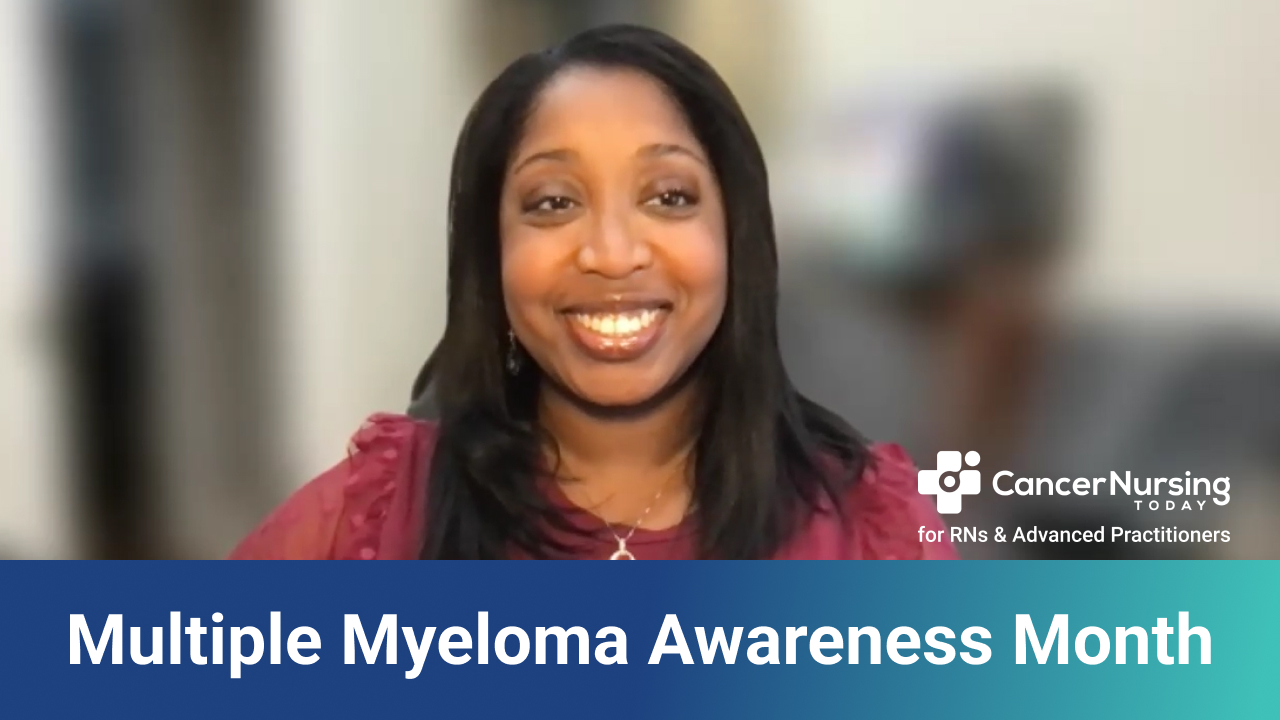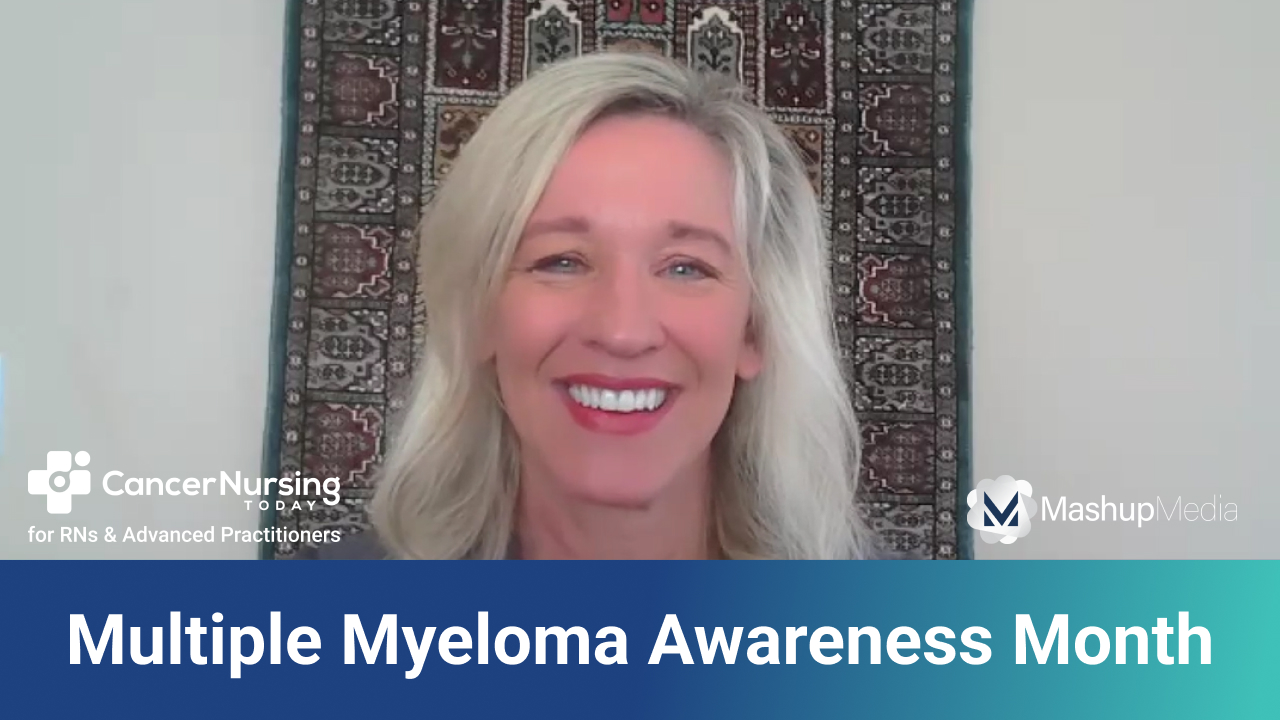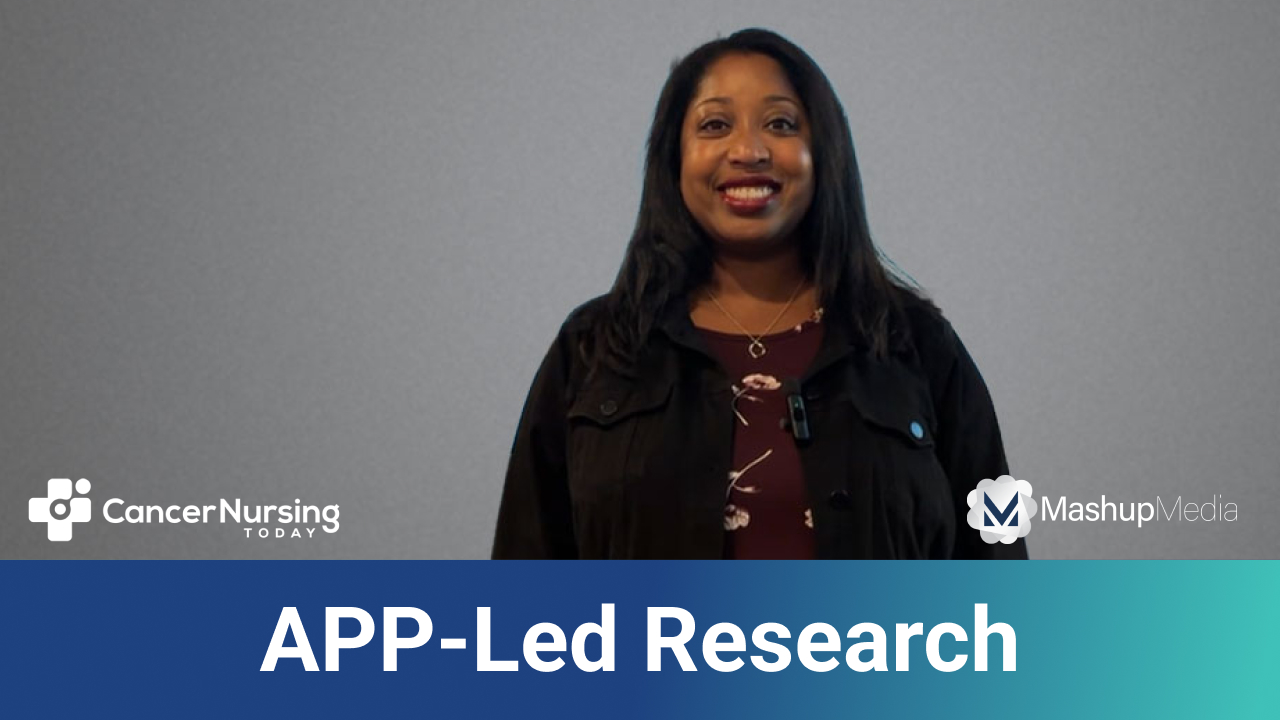
The Patient Navigation Center (PNC) at the Multiple Myeloma Research Foundation (MMRF) addresses barriers to care and supports patients and caregivers as they navigate a multiple myeloma diagnosis and treatment decision-making.
Erin Mensching, RN, BSN, OCN, of the MMRF, and colleagues presented findings from two surveys on the PNC and its patient navigator program during JADPRO Live 2024, the Annual APSHO Meeting.
According to presenters, while research advancements over the last two decades have created an abundance of treatment options for multiple myeloma, the expanded options have also made it increasingly difficult for patients and their caregivers to make informed decisions on the latest therapies and clinical trials.
The study authors explained that the PNC at the MMRF is a free resource designed to provide personalized information, support, and resources to bridge the gap in informed decision-making for multiple myeloma care. Patient navigators also provide emotional support and empower patients and caregivers to make informed decisions that “lead to better care and outcomes.”
Patient interactions with navigators at the PNC are categorized into cases to track insights, identify gaps in disease knowledge, address needs, and integrate trends and themes into patient and caregiver education. According to the study authors, 7,160 patients and caregivers connected with the PNC in 2023.
To optimize care outcomes for patients and caregivers navigating numerous treatment options, the researchers conducted satisfaction and longitudinal surveys to measure the immediate satisfaction and long-term impact of the PNC and its resources on patient behavior. The satisfaction survey was sent to patients after their inquiries were resolved and the longitudinal survey was sent to patients 90 days after initial contact with the PNC.
MMRF distributed the longitudinal survey to 1,127 patients and caregivers between December 2023 and June 2024. The survey garnered a 15% response rate (n=173), with 86% of survey respondents reporting “positive steps in their myeloma care after communicating with an MMRF patient navigator.”
The survey results found that 55% of respondents communicated with their care team about treatment goals, 34% could better interpret lab results and discuss those findings with their doctor, and 23% sought out a second opinion. Only 11% of respondents took no further action after speaking with a patient navigator.
The survey also assessed patient empowerment and confidence, garnering a 75% response rate (n=131). Most respondents (79%) agreed or strongly agreed that they experienced reduced diagnosis-related anxiety or distress after speaking with a patient navigator, and 74% agreed or strongly agreed that a patient navigator helped them better understand their condition.
The researchers underscored several barriers to care uncovered by the surveys. Distance from academic centers, limited access to myeloma specialists, or a lack of support were reported as significant barriers for respondents, which was reflected by the 14% of respondents who did not take further steps regarding their care after communicating with a patient navigator.
Demographic information was also evaluated by the surveys, with 70% of respondents hailing from a “rural, suburban, or town” area and 47% disagreeing about the ease of finding a myeloma specialist.
While the data confirmed that “communication with patient navigators positively impacts patients and caregivers navigating multiple myeloma,” the investigators identified future methods of leveraging the survey findings to analyze and identify additional patterns that affect patient behavior. Further analysis will focus on attributes such as disease stage, frequency of communication with the PNC, geographic locations, and zip codes to better address the needs of caregivers and patients navigating multiple myeloma diagnosis and treatment.
Reference
Mensching E, Hartmann B, Allison G, et al. Enhancing patient outcomes: evaluating the impact of the multiple myeloma research foundation patient navigation center. Presented at JADPRO Live 2024, the Annual APSHO Meeting; November 14-17, 2024; Houston, Texas.







 © 2025 Mashup Media, LLC, a Formedics Property. All Rights Reserved.
© 2025 Mashup Media, LLC, a Formedics Property. All Rights Reserved.